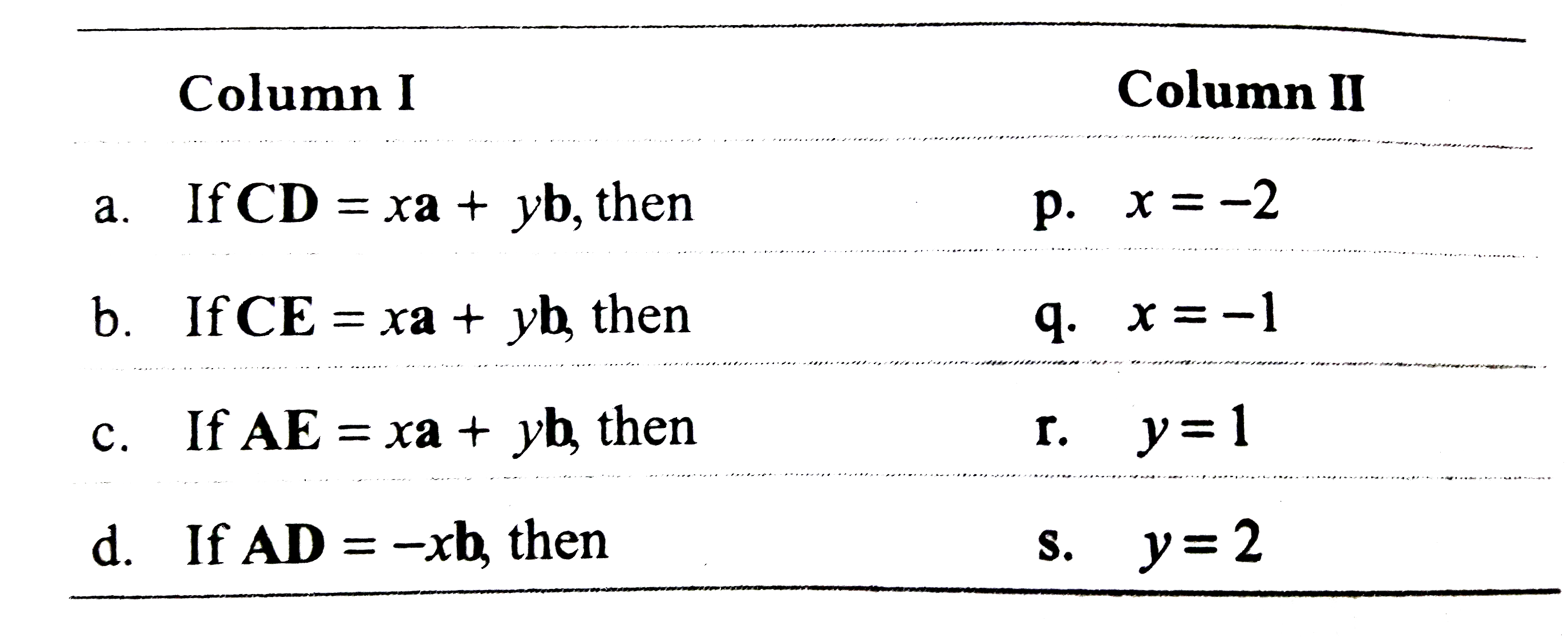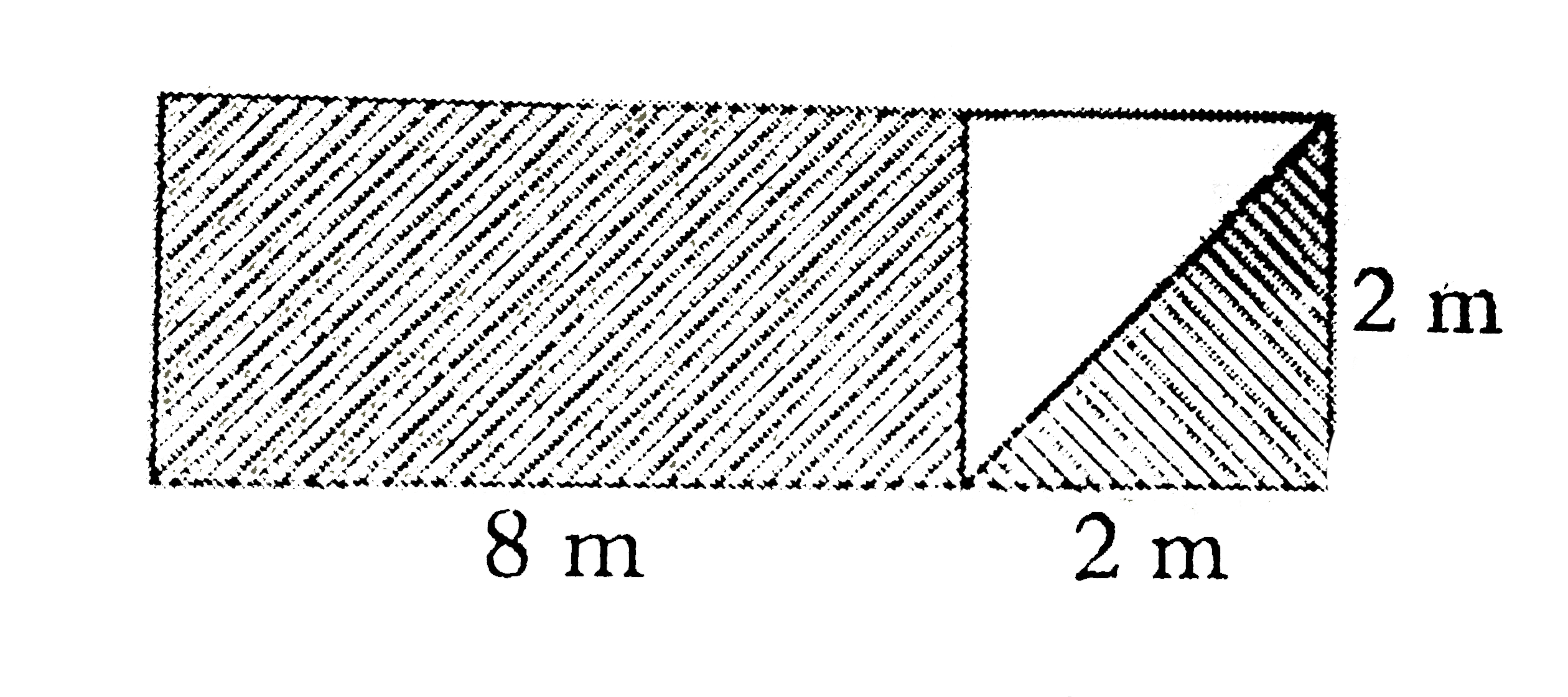a and b form the consecutive sides of a regular hexagon ABCDEF.
 Solution in Gujrati
Solution in Gujrati
The correct Answer is:A, B

AB=a,BC=b
∴AC=AB+BC=a+b . . (i)
AD=2BC=2b . . (ii)
(because AD is parallel to BC and twice is length)
CD=AD−AC=2b−(a+b)=b−a
FA=−CD=a−b . . (iii)
DE=−AB=−a . . . (iv)
EF=−BC=−b . . (v)
AE=AD+DE=2b−a . . .(vi)
CE=CD+DE=b−a−a=b−2a. . . (vii).
Similar Questions
The area of the shaded part in the figure given below is ______.

View SolutionThe inequation represented by the graph given below is :
View SolutionThe inequation that best describes the graph given below is _________
View SolutionThe inequation that best describes the following graph is _________
View SolutionWhich inequations represent the shaded region in the given figure
View SolutionIn the chemical reactions,
ltimg src="https://d10lpgp6xz60nq.cloudfront.net/physics_images/JM_10_CHE_P1_E01_009_S01.png" width="80%"gt
the compounds 'A' and 'B' respectively are
View SolutionMatch the followings (column I with column II)
ltimg src="https://d10lpgp6xz60nq.cloudfront.net/physics_images/NCERT_BIO_XI_C03_E01_011_Q01.png" width="80%"gt
View SolutionMatch column I with column II:
ltimg src="https://d10lpgp6xz60nq.cloudfront.net/physics_images/NCERT_BIO_XI_C18_E01_003_Q01.png" width="80%"gt
View Solution
